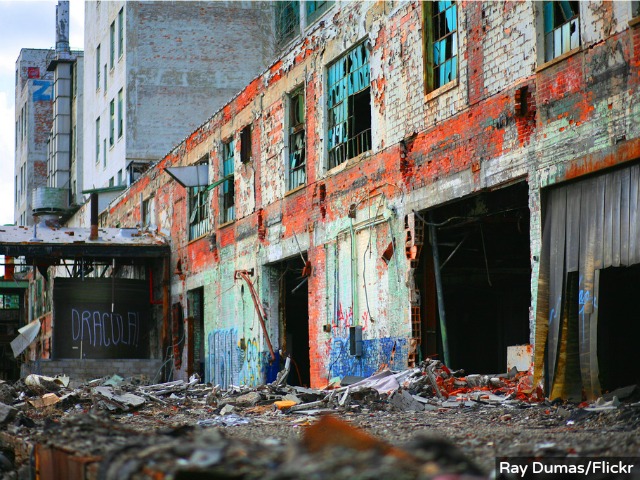Sightseeing of abandoned buildings, factories, schools, and churches is becoming a growing industry in the now dilapidated city of Detroit.
Some people come from far away to visit Los Angeles and tour the houses of the rich and famous. Architectural student Oliver Kearney came from England to tour the ruins of Detroit. “No other American city has seen decline on this scale,” Kearney claims.
With 78,000 remaining vacant structures that investors are cool on renovating, and with a city too bankrupt to shell out the $8000 per structure needed to demolish them, the landscape has become a fertile ground for curious exploration. Kearney explains that in Europe, when buildings become derelict, they tear them down. “In Detroit, you can relate, you can see traces of what’s happened, you can really feel the history of a city,” he says.
Since the city declared bankruptcy in July, there has been an appreciable increase in visitors inquiring about the ruins. Photographers from all over have come to take pictures capturing the downfall of the once burgeoning motor city. A couple of French photographers produced a book called The Ruins of Detroit.
Jesse Welter, a former aircraft mechanic living in the Detroit suburb of Royal Oak, made frequent visits to the city with his camera in hand. At first, Welter sold his photographs of the decaying buildings at an artists’ market. When he noticed the intense interest visitors had in seeing pictures of the the declining cityscape, Welter started a tour bus business. Charging $45 per person, he guides tourists through the city, showing them the devastation and blight of the old landmark structures like the Packard Automotive Plant, the train station, and the East Grand Boulevard Methodist Church.
However, not all the citizens are happy with Welter’s ambition. Some see him as an exploiter of the city’s demise and refer to the gaping as “ruin porn.” Jean Vortkamp, a community activist and former mayoral candidate, stated, “The decay is not cool, not arty-farty. I see the lady with bags and three layers of clothes on, and then I see a group of white young people climb out of their dads’ cars with cameras that are worth so much.”
Welter disagrees with Vortkamp, saying that his actions can stir up activism to help restore the city. Moreover, seeing Detroit as it is can provide a cautionary tale for others cities. “It makes you question your mortality as a species. We try to make our mark on the planet by building these concrete and brick structures, but Rome obviously fell,” Welker said. “What is Manhattan going to look like in 300 years? Is it still going to be a bustling metropolis?”

COMMENTS
Please let us know if you're having issues with commenting.